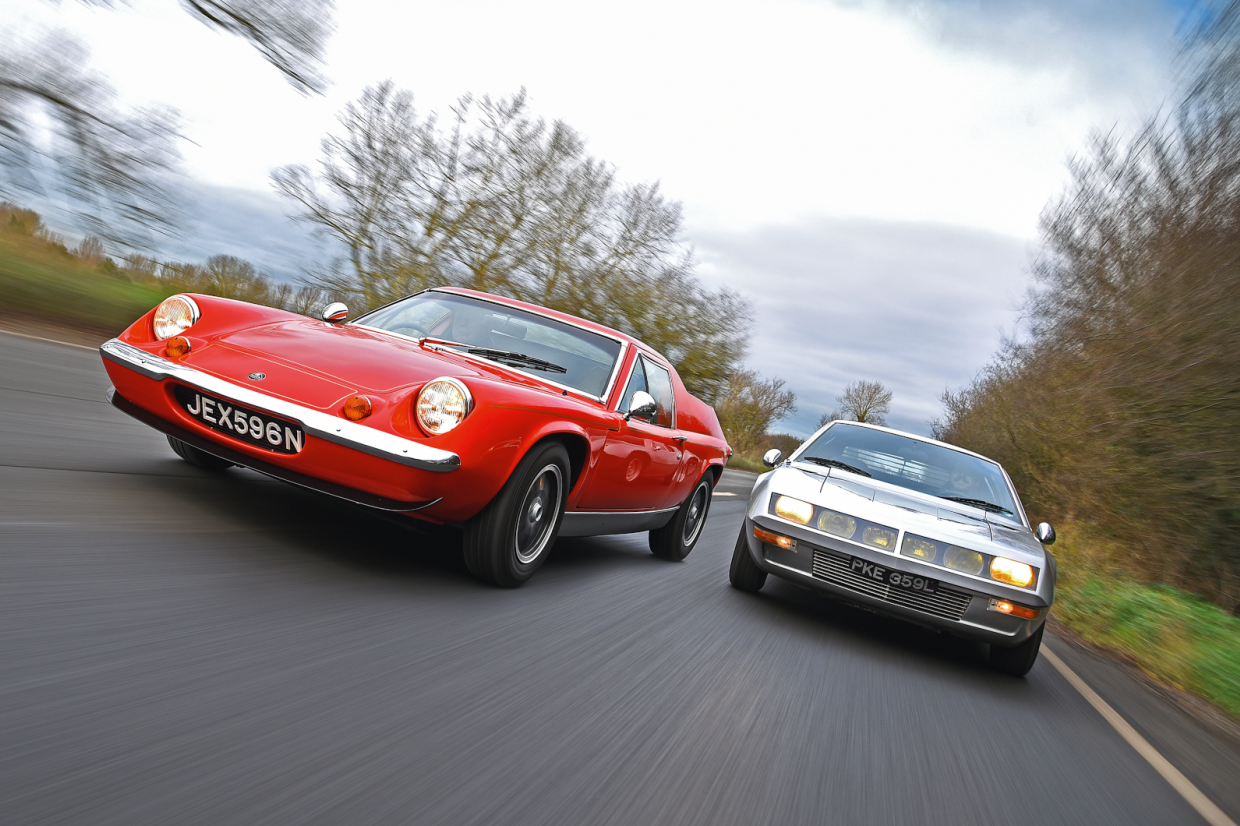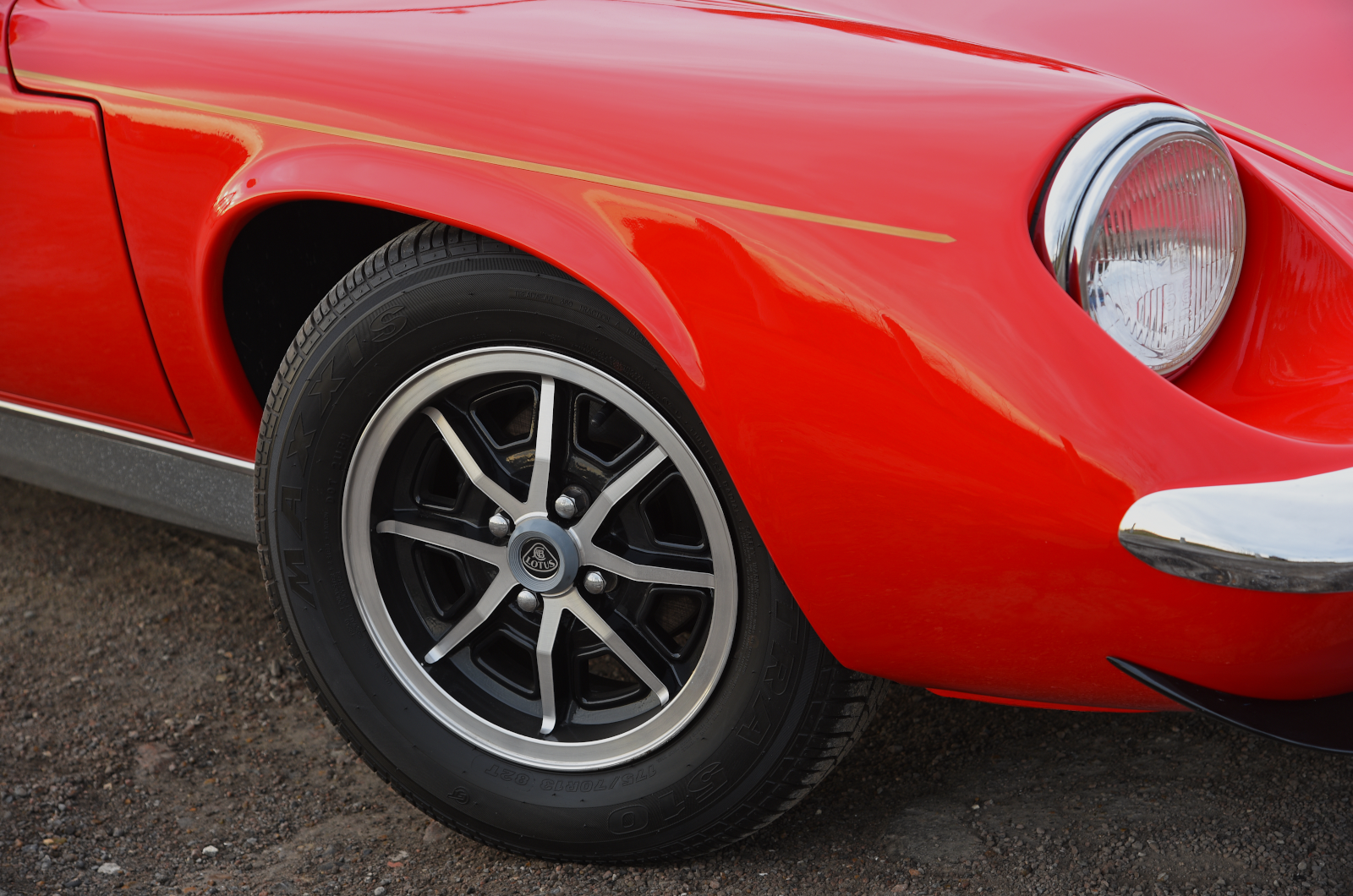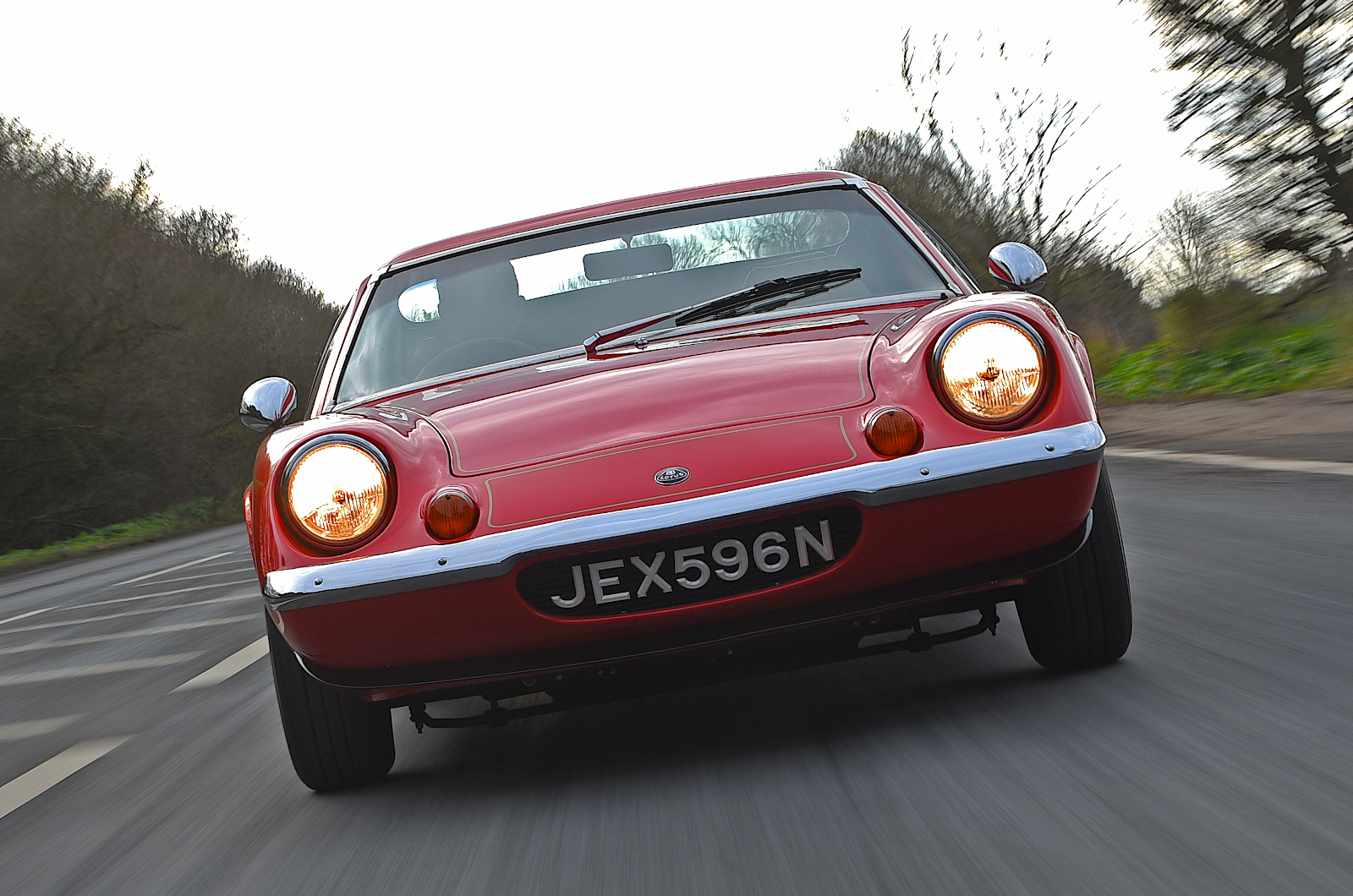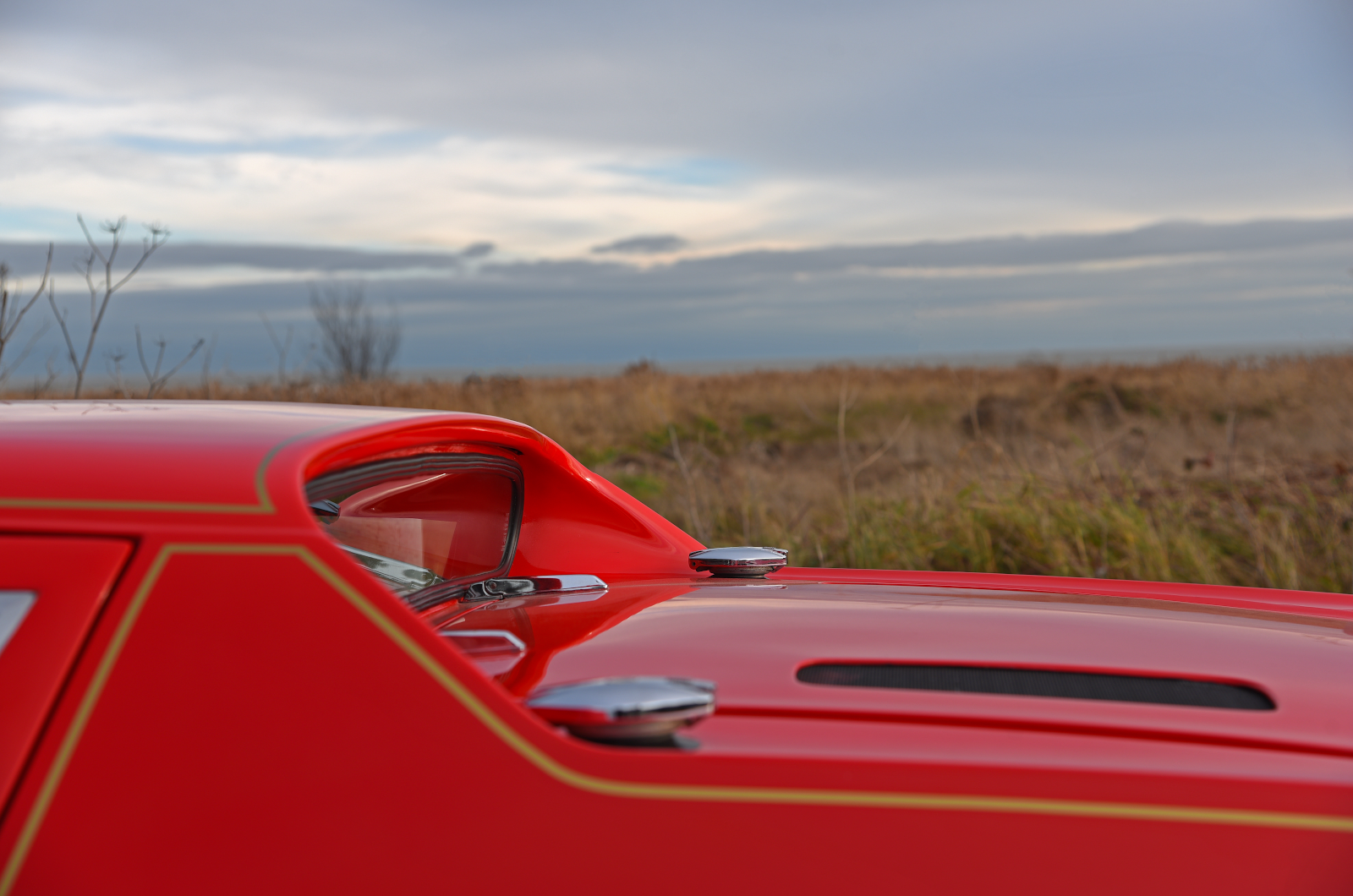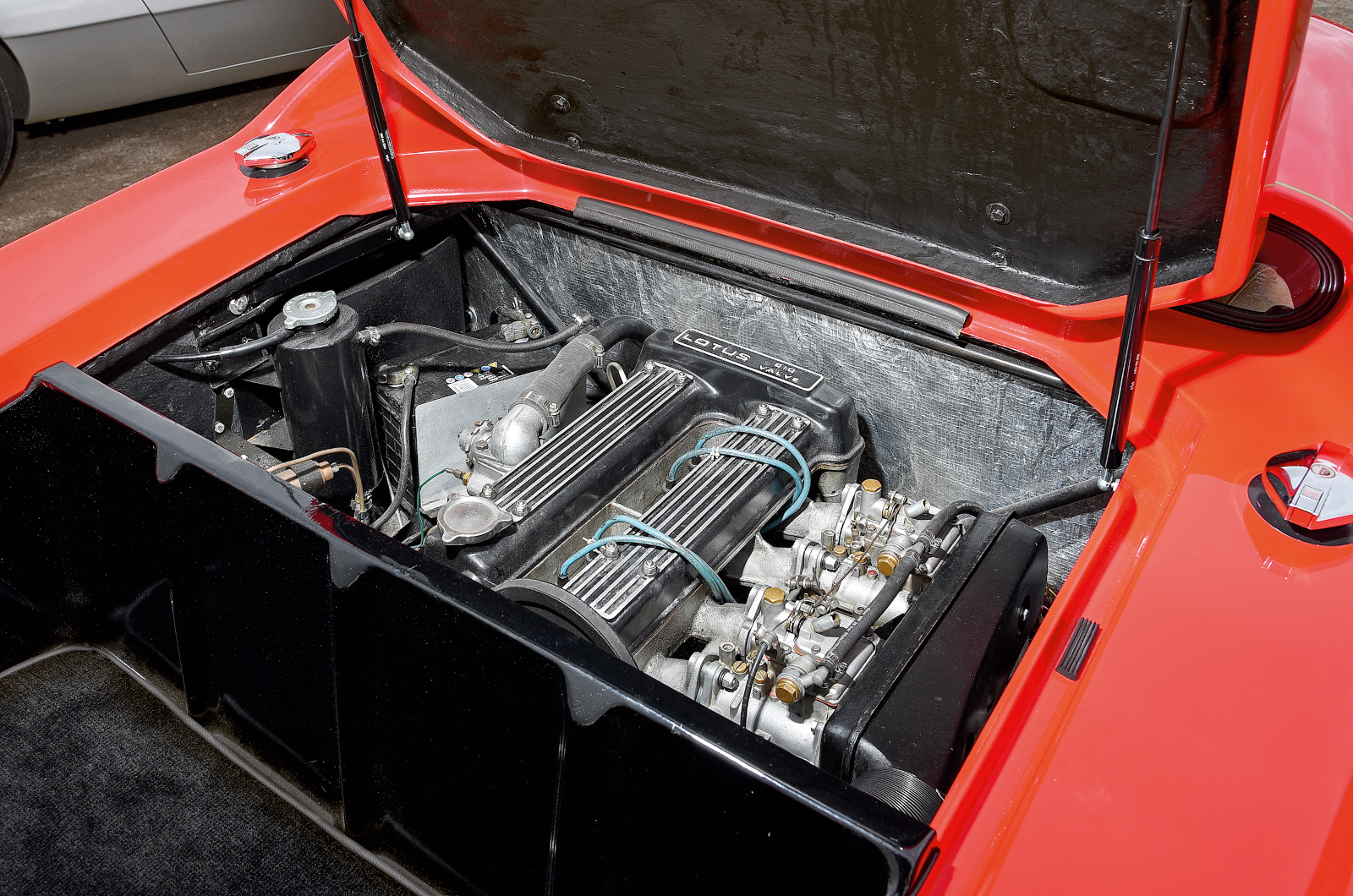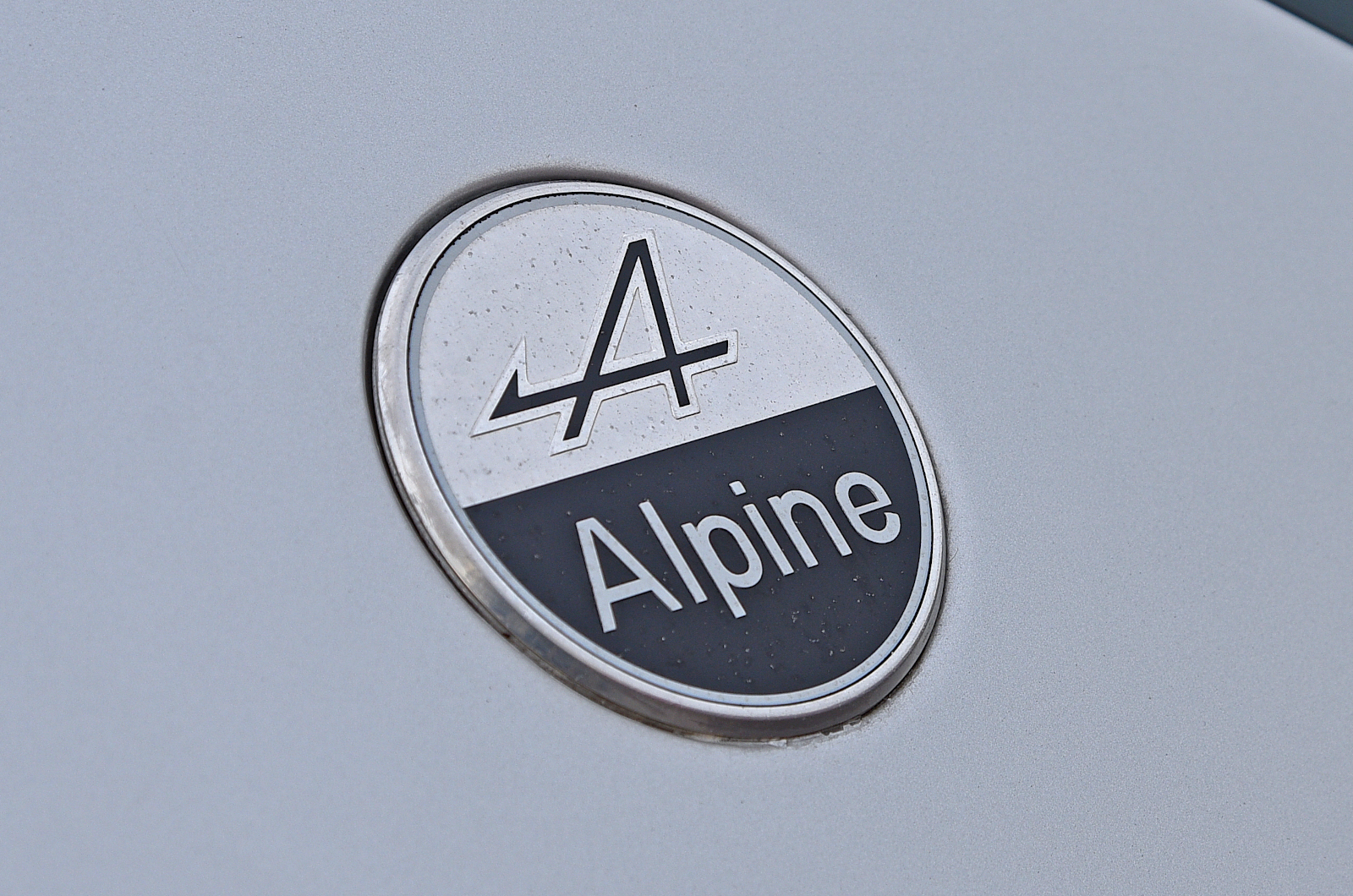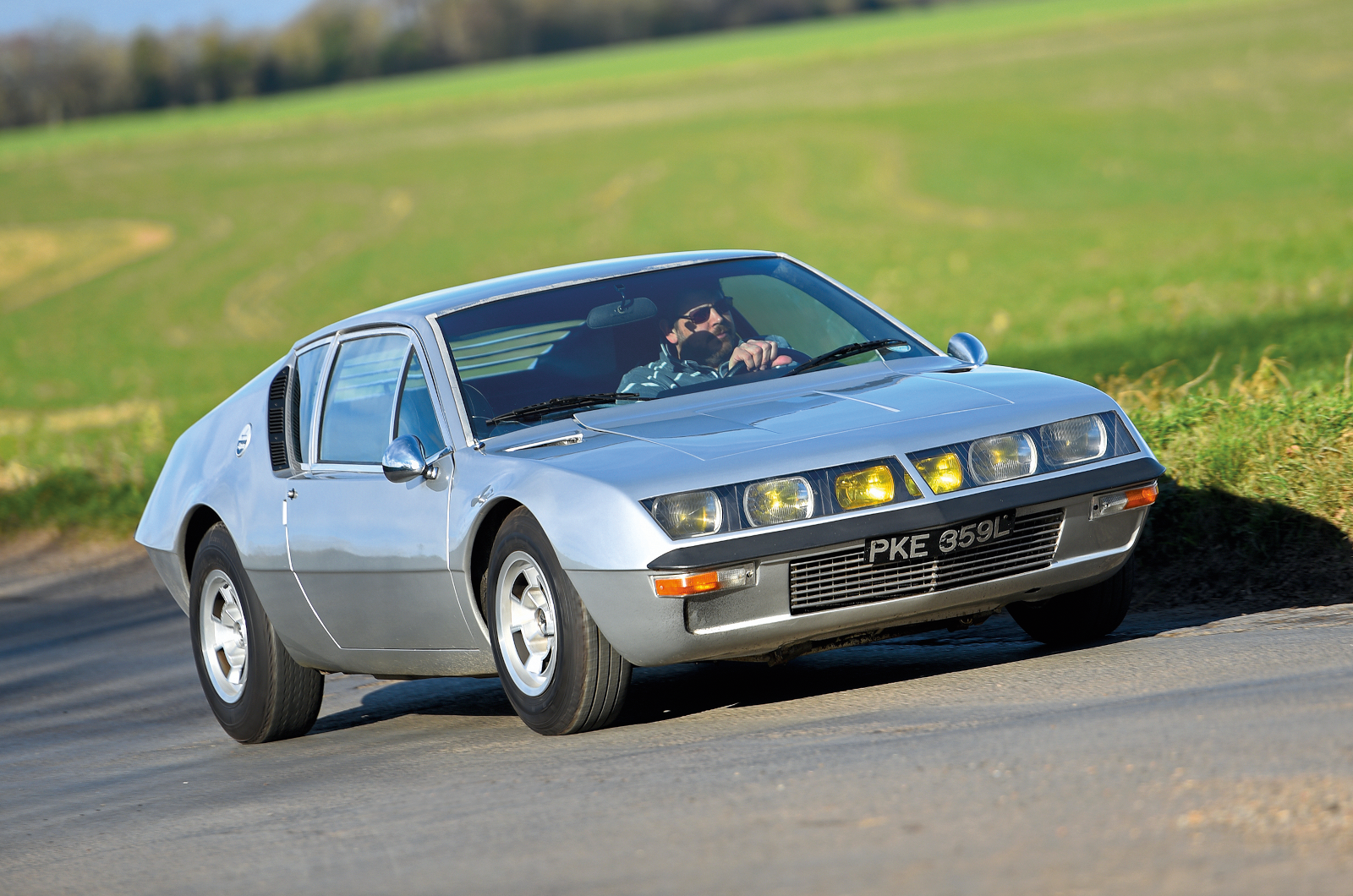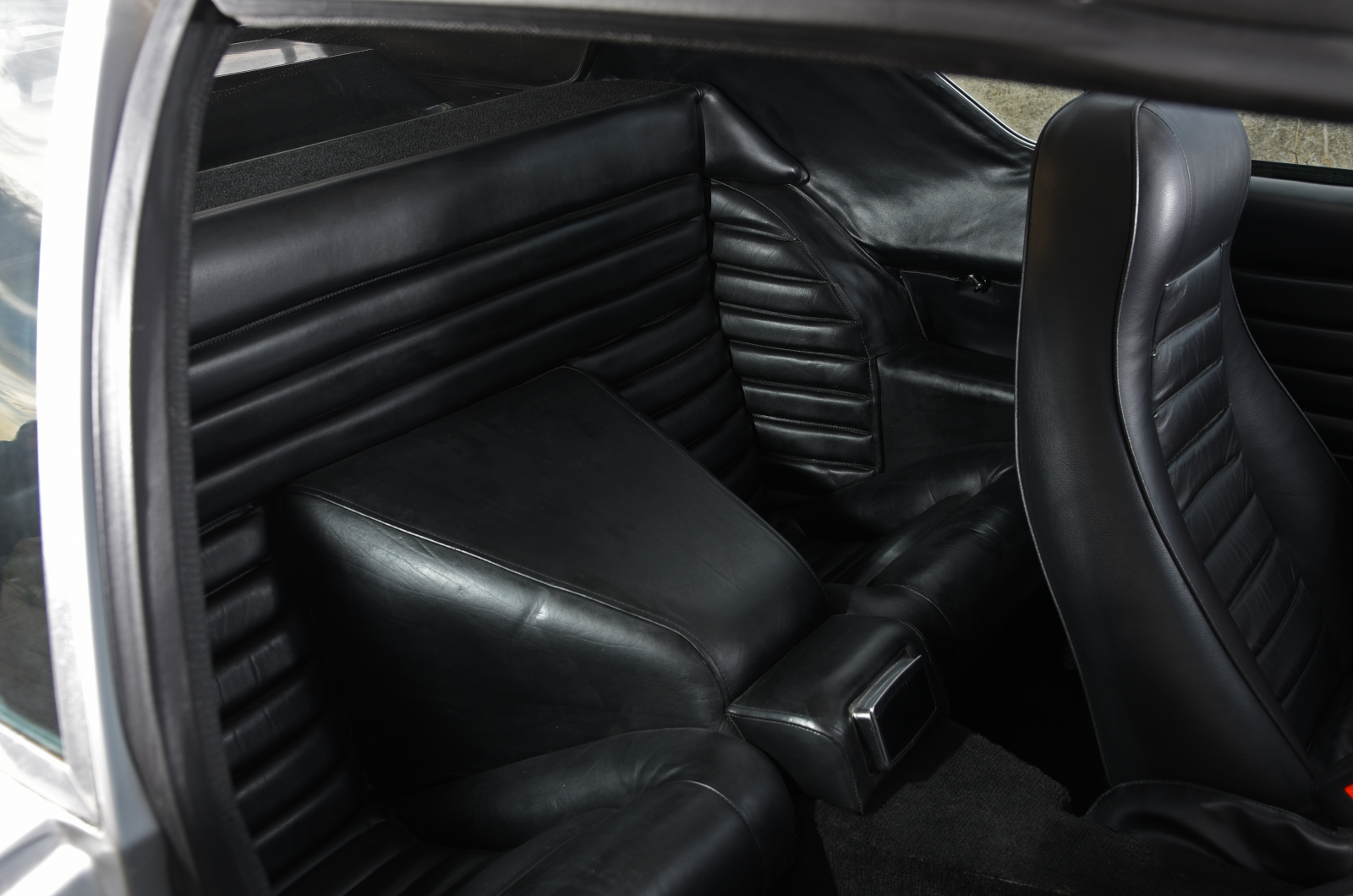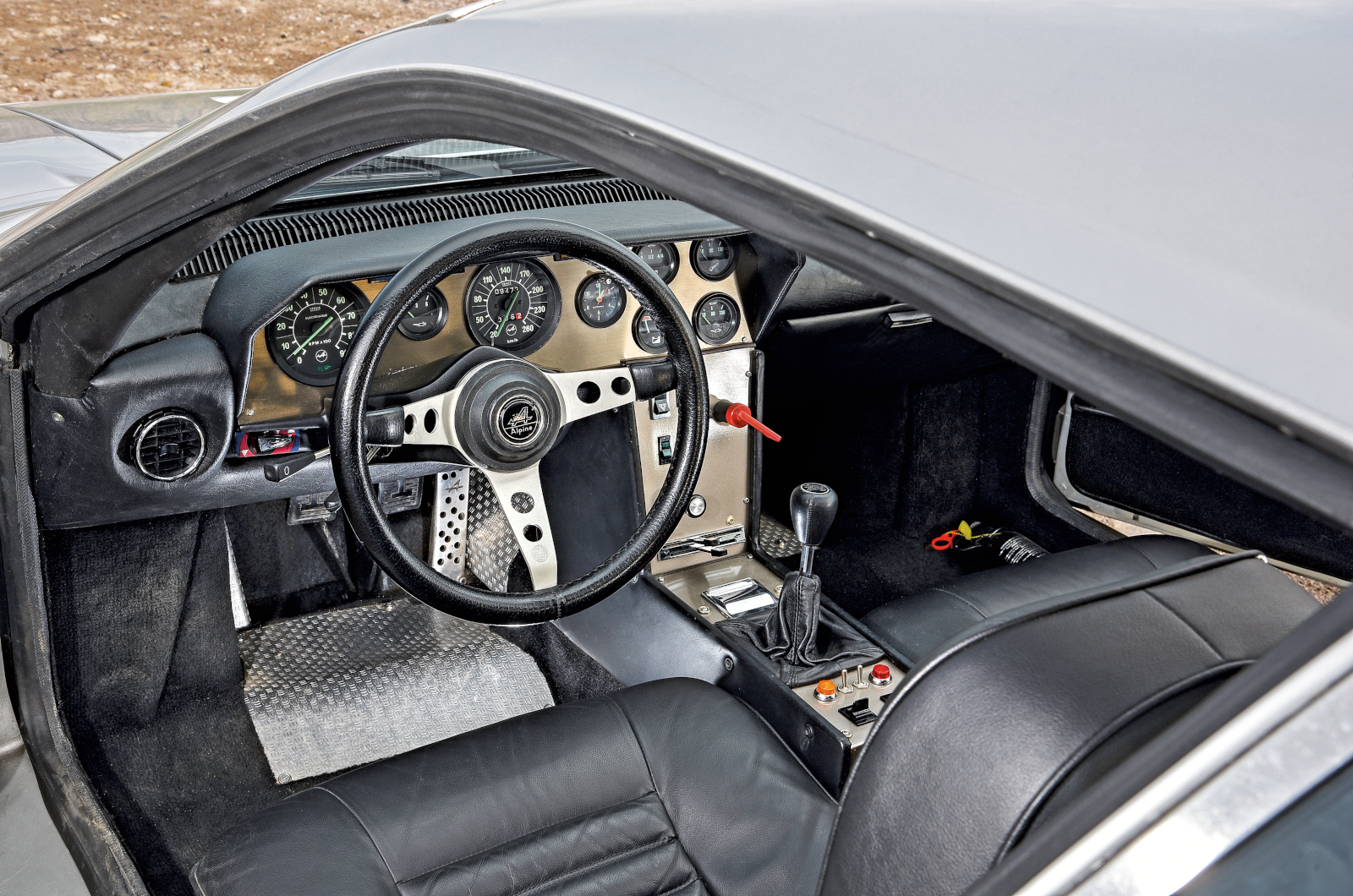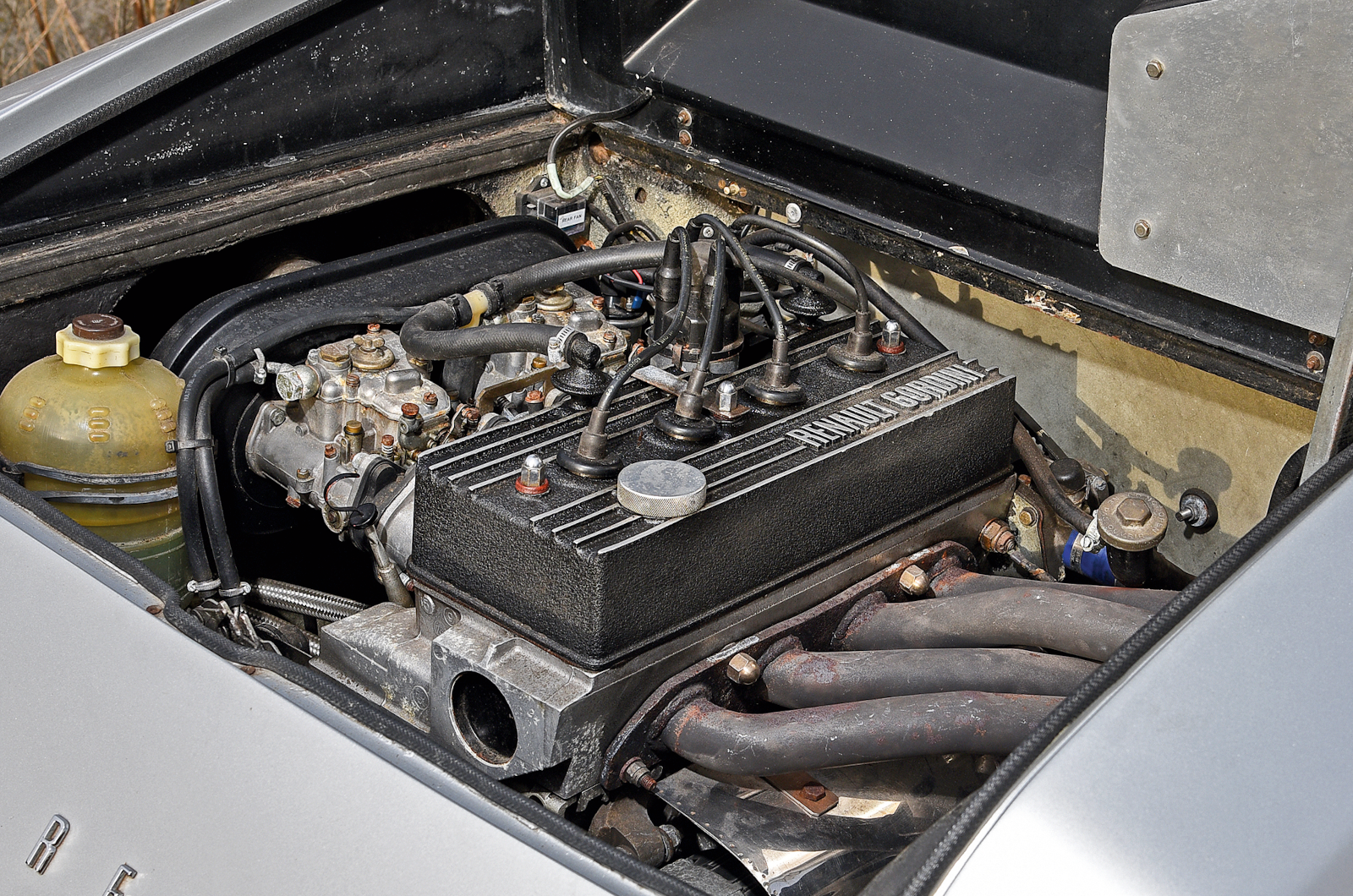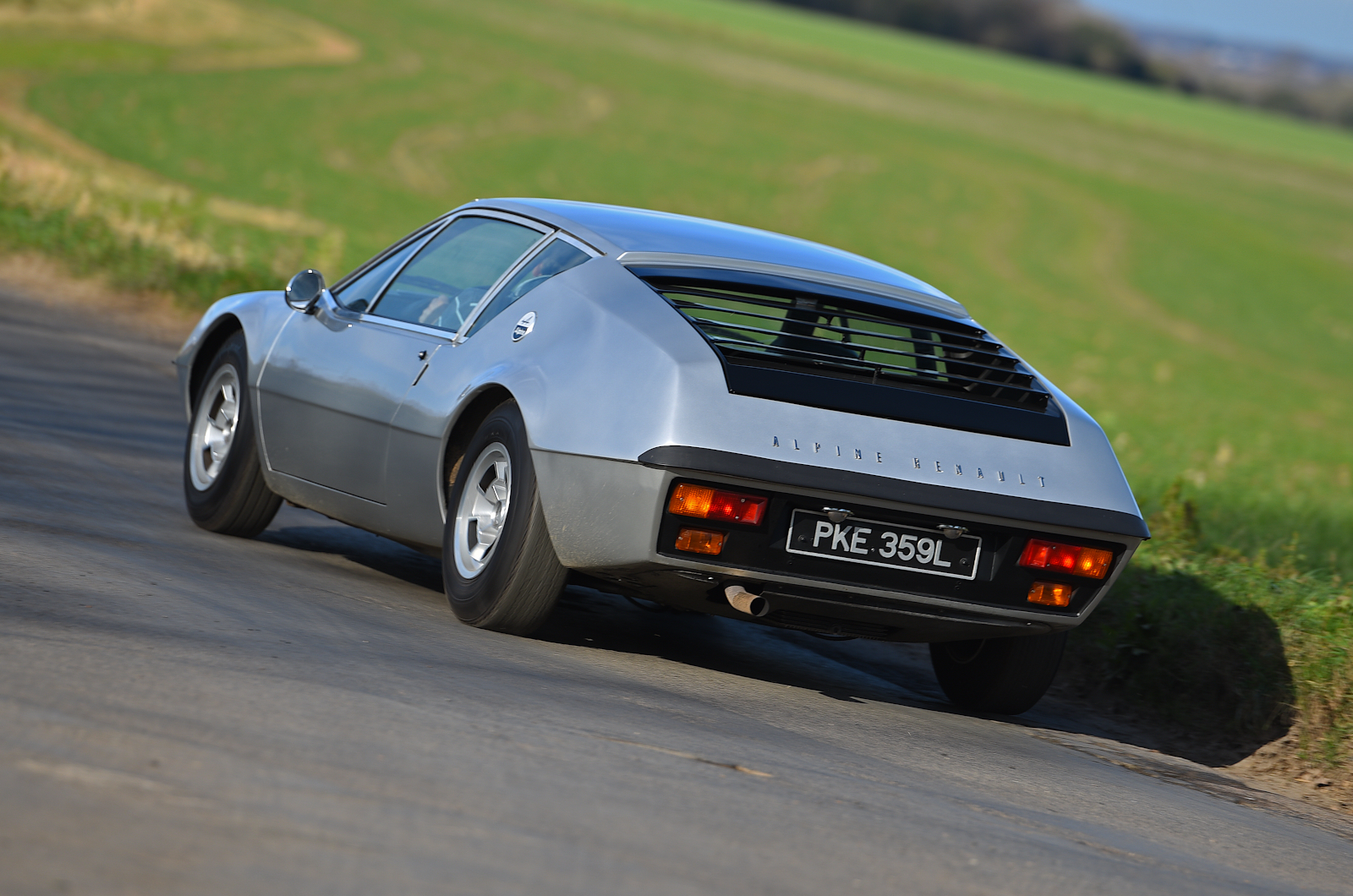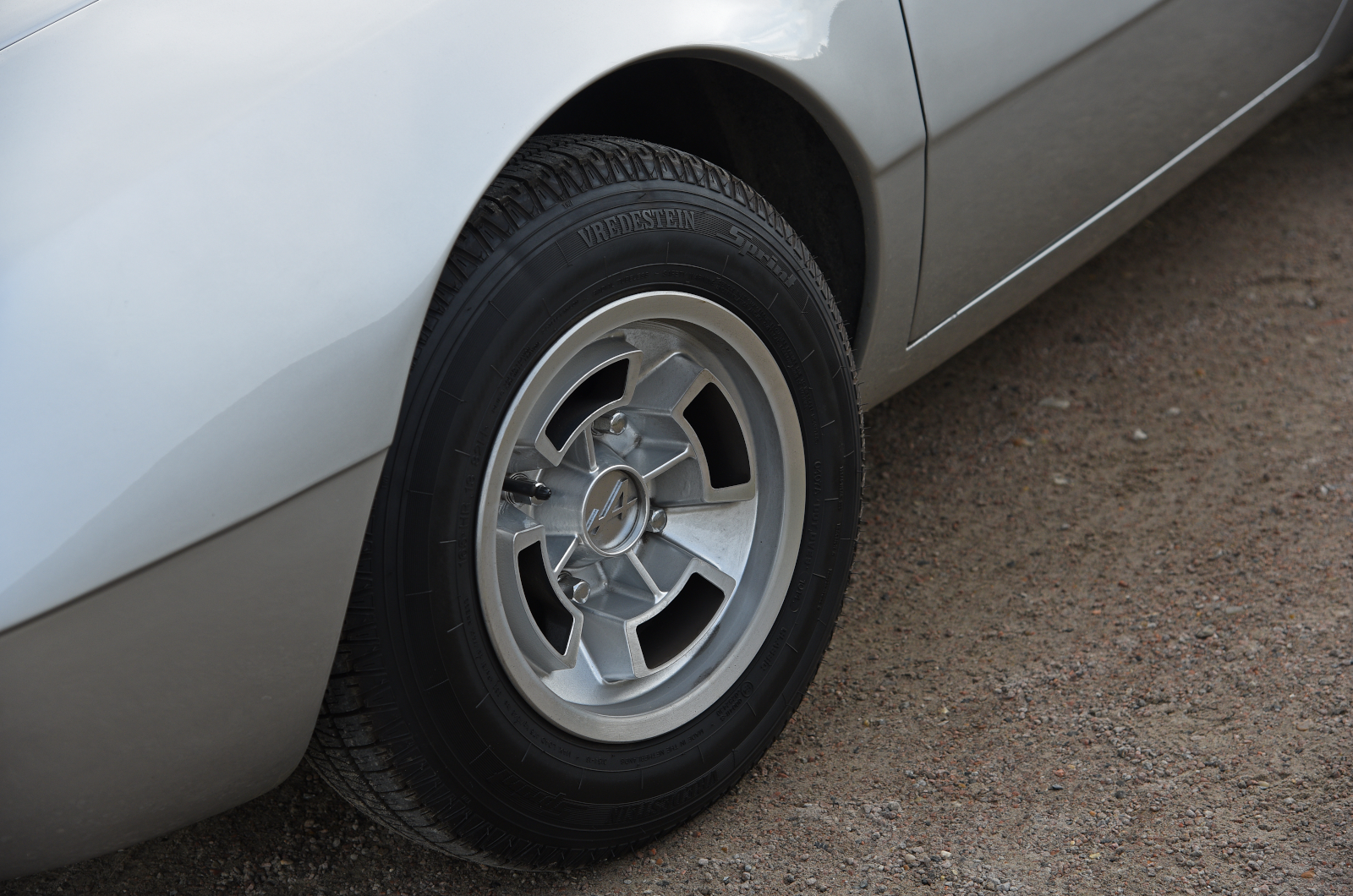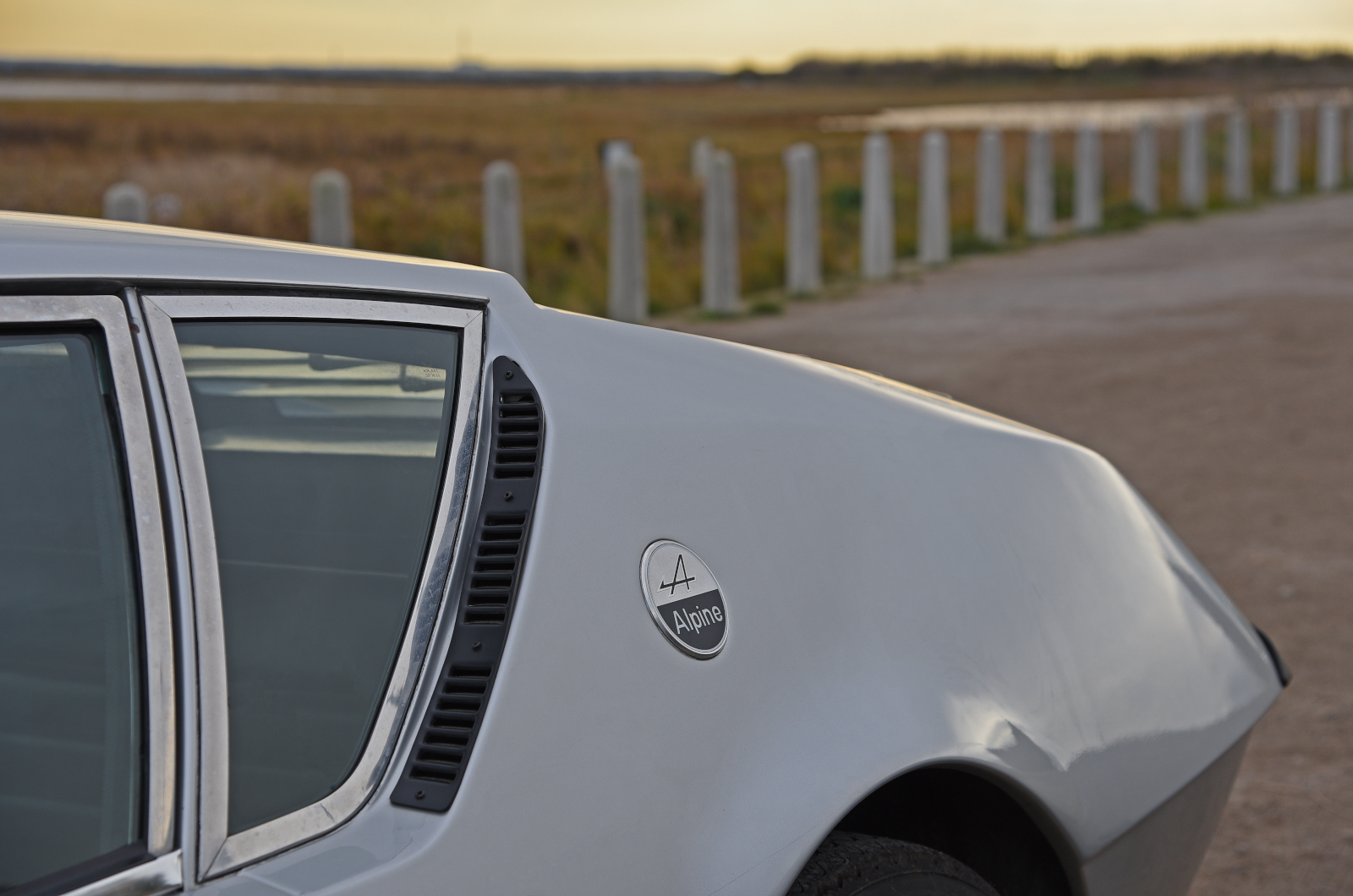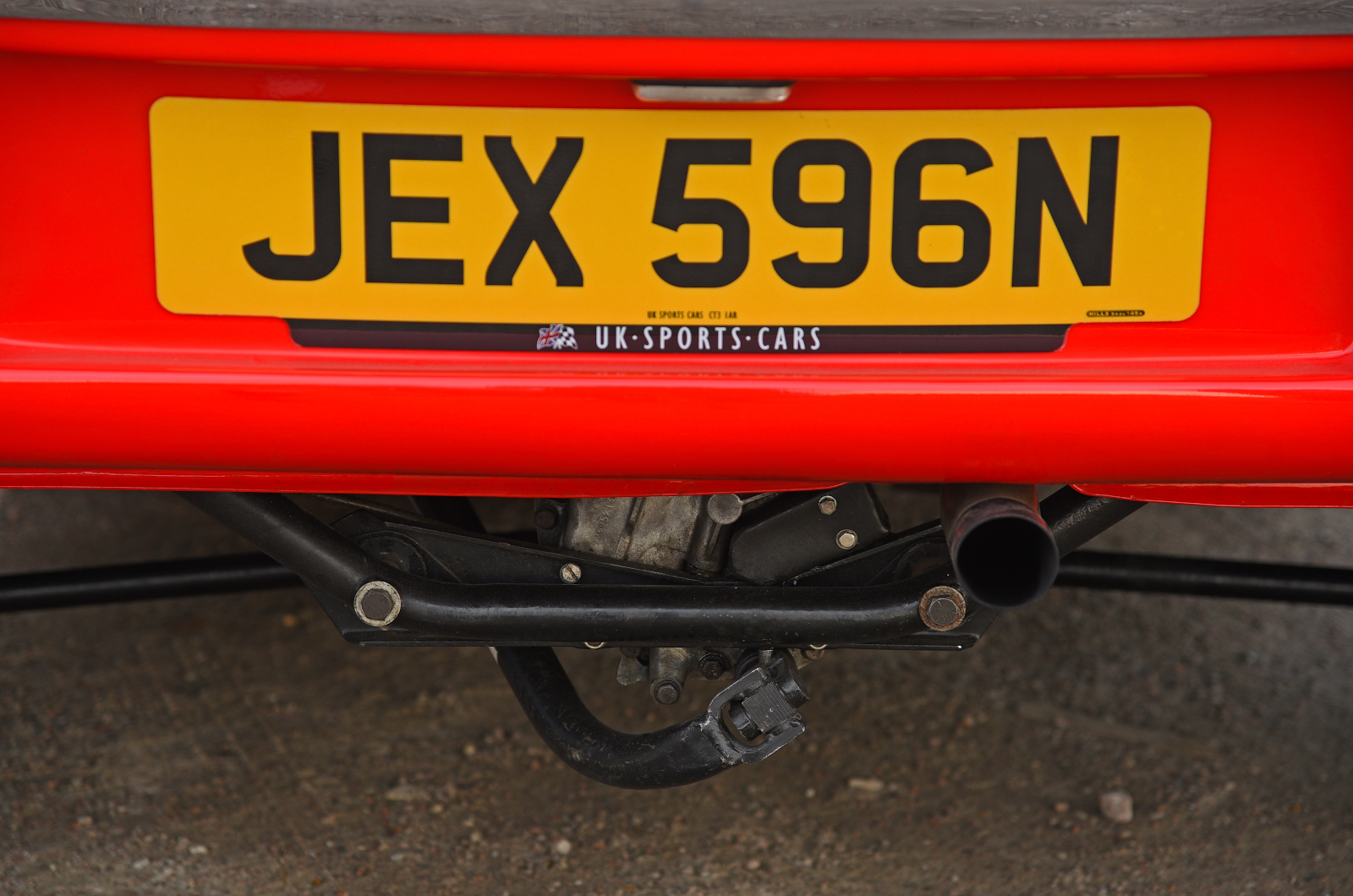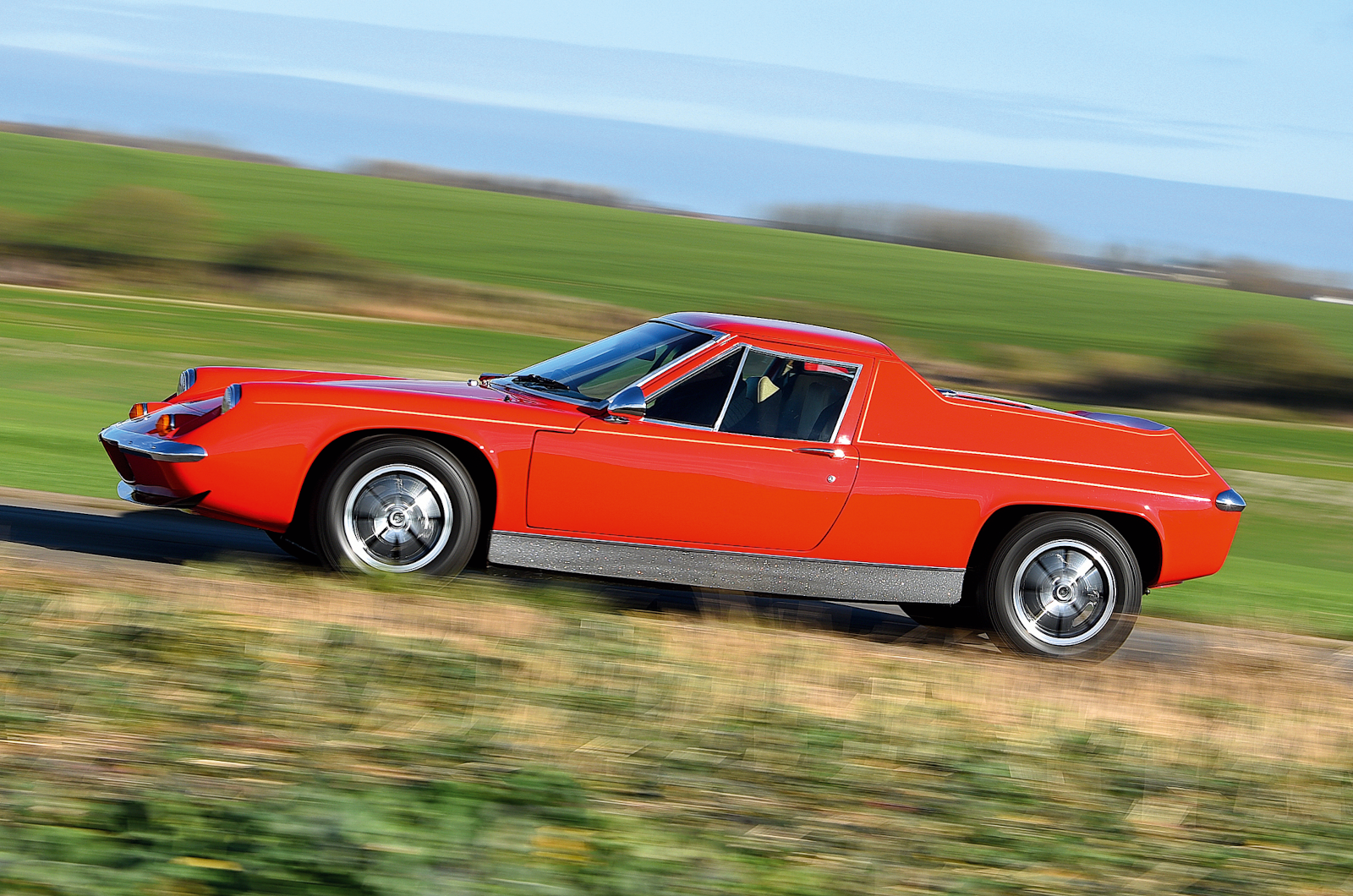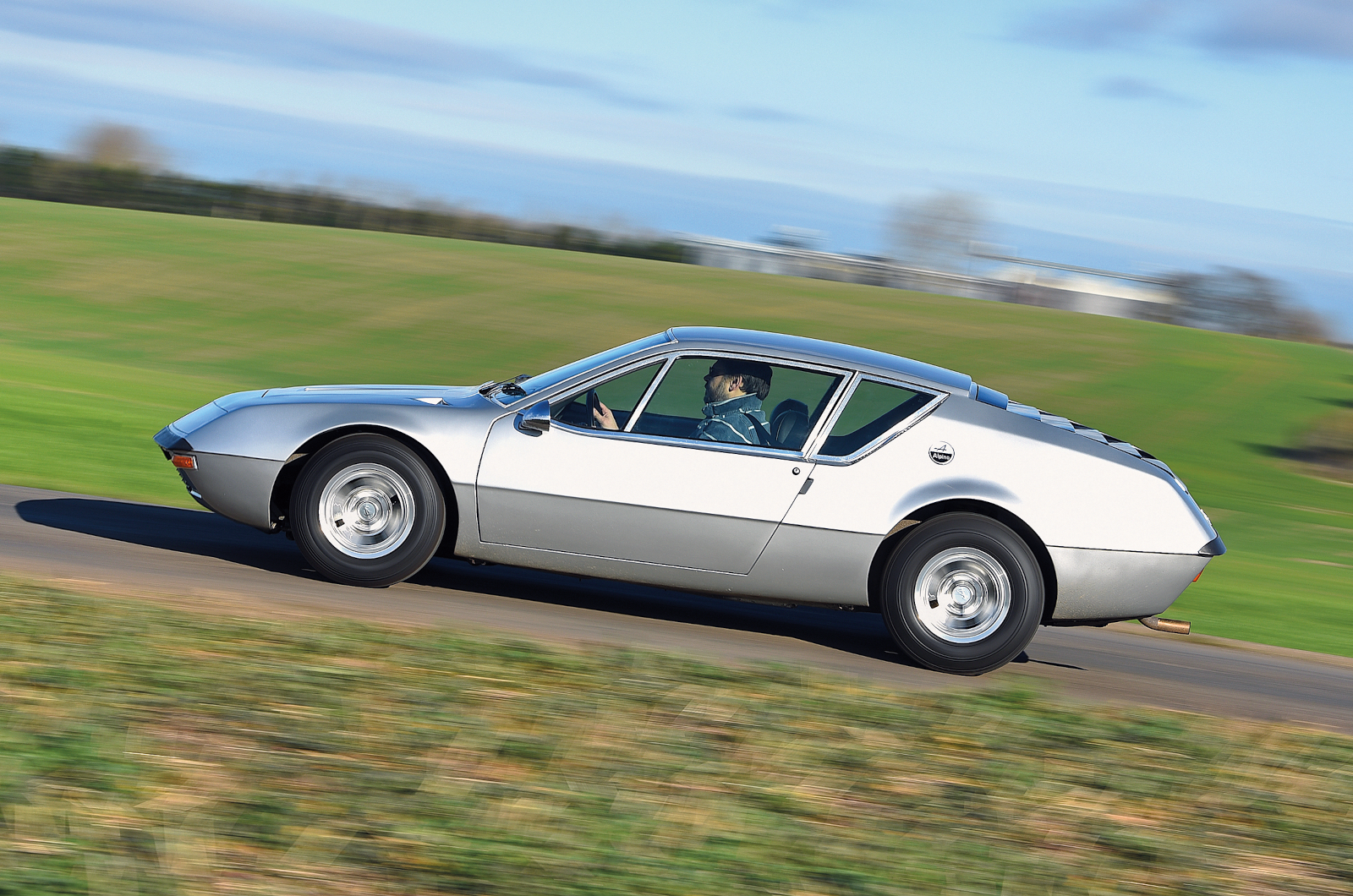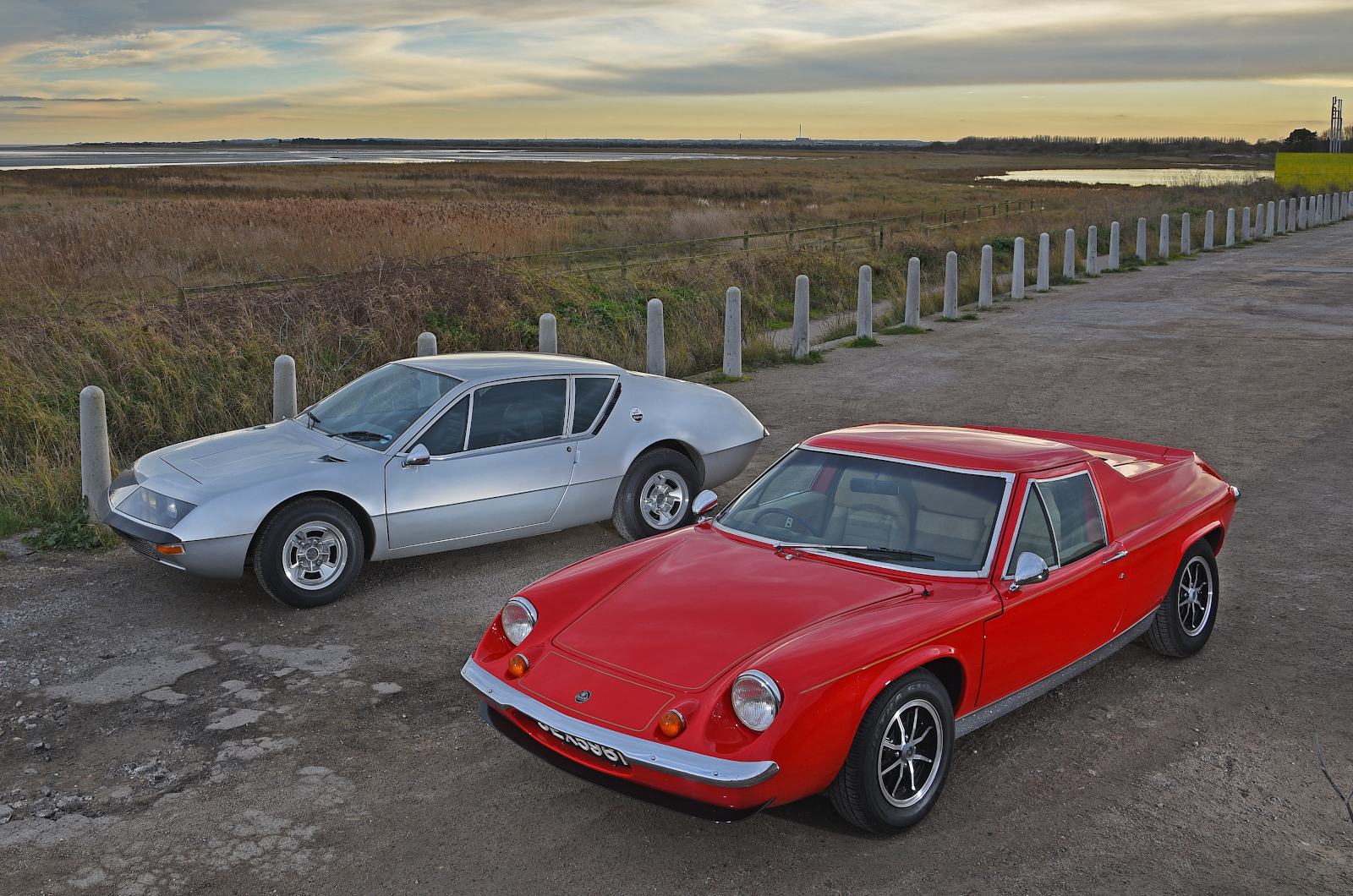Poor low-speed torque and a long bottom gear mean ponderous initial acceleration, yet the slippery A310 can top 120mph when fully wound out.
It needs keeping on the boil: you find yourself regularly dropping to fourth even on the motorway to keep up the momentum.
Every last available rev and gear ratio is there to be used to the full – which is not such a bad thing, because the change has a solidly accurate action that puts the Europa’s imprecise shift to shame.
The Lotus Europa’s gearbox pokes out from under the rear bumper
It’s the same ’box in the Europa but sits behind the engine rather than in front, entailing a convoluted rod linkage.
Adjusting it was always a bit hit-and-miss (this one was due some attention), but you can at least spot the mechanism easily as it wiggles around slightly obscenely under the rear valance.
Yet the Europa goes so well – in a straight line and around corners – that any shortcomings of the transmission are soon forgiven and forgotten.
The Lotus Europa’s form follows function, but has personality
Its smooth, free-revving engine will spin one rear wheel for yards if you don’t feed the clutch in smoothly, and the acceleration from there onwards is almost savage: easily in the Ferrari Dino 246 class up to 70-80mph.
We are under instruction to keep the revs down, but this freshly rebuilt Twin Cam spins so freely – and sings so sweetly – that doing so requires a conscious effort.
Conversely, it is as forgiving at low speeds as the Alpine is flat, always happy to be a gear ahead of where you expect it to be, with flexibility to spare.
The Lotus Europa corners with peerless agility
From inside, the Europa’s low build enhances the feeling of speed and before long everybody else on the road seems to be in your way.
On tyres that look absurdly skinny by modern standards, the grip apparently has no limits and you just point the car instinctively where you want to be through delightfully light, direct steering.
There’s no understeer, no roll, merely a sense that you are no longer in a world where slowing down for corners is required, even bumpy ones.
The Alpine A310’s distinctive profile continued through to the A610 and GTA
The smooth ride is a bonus feature but you expect – and get – really good brakes in the Europa.
In its handling the Alpine gets close to the standards the Europa sets, but is more focused on high-speed predictability than easy low-speed manners.
Its steering, at two and half turns from lock to lock, feels heavy initially but lightens beautifully, returning all the right messages through the thick-rimmed wheel as it castors smoothly back through your palms.
Vision through the slatted rear ’screen is better than expected, and the A310 makes a relaxing high-speed companion
The narrow and inherently agile A310 has a GT-style ride and true sports car brakes, discs all round.
It turns in superbly and generates a lot of cornering power – much more than you would ever need on the road – and stays flat, neutral and undramatic, if not quite so light on its feet as the Europa.
The power delivery characteristics of the engine make a little more sense now and, as in the Lotus, you don’t need to use the brakes often.
This Lotus Europa was the final one ever built
Lift off at a critical moment – or build cornering speeds to a stage where understeer is about to transition into oversteer – and the laws of physics will doubtless come into play just at the point where most of us run out of talent.
For the most part the Alpine is a fascinating, forgiving and exciting machine.
As French as a gendarme with a sense-of-humour bypass but much rarer (particularly in the UK, where A310s were never officially imported), it also looks very striking in six-headlight form on those gorgeous alloys.
Choosing between the Alpine A310 and Lotus Europa Special is a question of refinement versus outright performance
Its combination of Citroën SM-style ’70s chic with sports car credibility is not readily found elsewhere, and certainly not in the frail but fabulous Europa Special.
There is a whiff of genius about the British car that transcends its shortcomings, a cheeky sense of fun that makes it seem eternally young.
I completely get it but, unlike the Alpine, I’m not sure I would ever really want one.
Images: Will Williams
Thanks to Justin Banks and UK Sports Cars
Factfiles
Alpine A310
- Sold/number built 1971-’76/2340
- Construction steel chassis, glassfibre body
- Engine all-alloy, ohv 1605cc ‘four’, twin Weber carburettors
- Max power 124bhp @ 6000rpm
- Max torque 109Ib ft @ 5000rpm
- Transmission five-speed manual, RWD
- Suspension double wishbones, coil springs, telescopic dampers, anti-roll bar f/r
- Steering rack and pinion
- Brakes discs, with servo
- Length 13ft 9in (4191mm)
- Width 5ft 4in (1626mm)
- Height 3ft 5¼in (1048mm)
- Wheelbase 7ft 5½in (2273mm)
- Weight 1819Ib (825kg)
- 0-60mph 8.1 secs
- Top speed 125mph
- Mpg 20-27
- Price new £4000
- Price now £15-30,000*
Lotus Europa Special
- Sold/number built 1972-’75/3130
- Construction steel chassis, glassfibre body
- Engine iron-block, alloy-head, dohc 1558cc ‘four’, twin Weber carburettors
- Max power 126bhp @ 6500rpm
- Max torque 113Ib ft @ 5500rpm
- Transmission five-speed manual, RWD
- Suspension independent, at front by double wishbones rear multi-link, radius arms; coil springs, telescopic dampers f/r
- Steering rack and pinion
- Brakes discs, with servo
- Length 13ft 1in (3988mm)
- Width 5ft 5in (1651mm)
- Height 3ft 7¼in (1098mm)
- Wheelbase 7ft 7in (1422mm)
- Weight 1555Ib (705kg)
- 0-60mph 6.6 secs
- Top speed 123mph
- Mpg 24
- Price new £2708
- Price now £15-50,000*
*Prices correct at date of original publication
READ MORE
Dieppe diamonds: Alpine A110, A310 and GTA
The Tokyo Elite
28 short-lived classic cars
Martin Buckley
Senior Contributor, Classic & Sports Car
